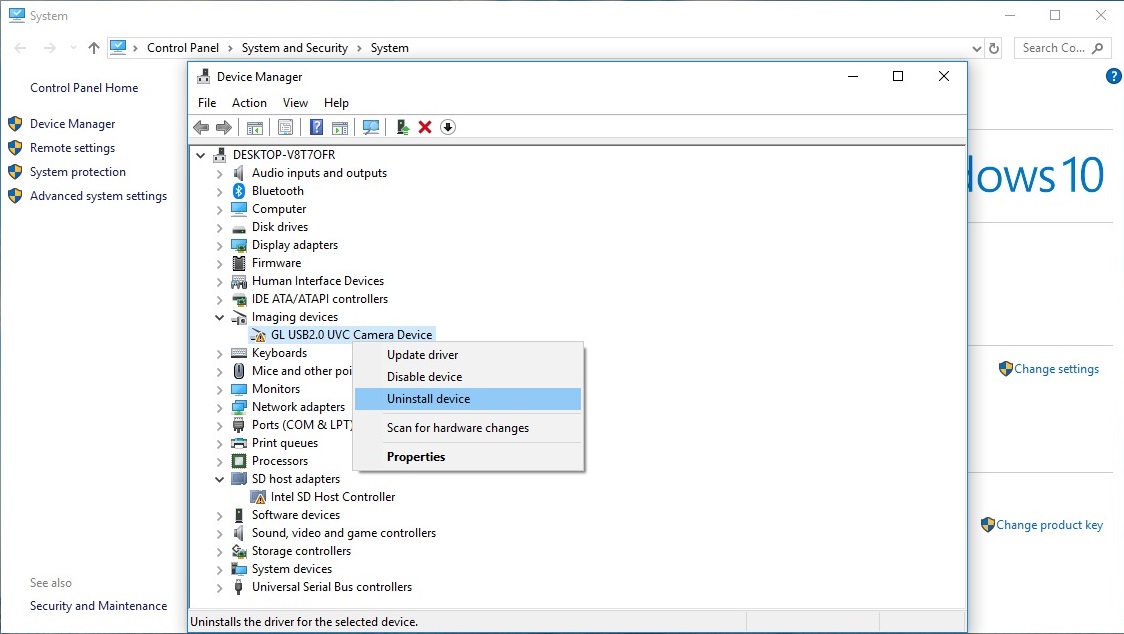BPM Microsystems - Setting The Standard in Device Programming Chris Gear Sr. Technical Support 5373 W Sam Houston Pkwy N, Suite 250 Houston, Texas 77041 USA Telephone: 713-688-4600 x5579 Fax: 713-688-0920 EMail. Device Driver for all 33U, 37U, 38U series, polarization USB cameras and the DFG/HDMI converter. November 27, 2020. In the Device Manager, expand Imaging Devices and right click on USB Video Device; Select Update Driver Software; Select Browse my computer for driver software; Select Let me pick from a list of device drivers on my computer; Select the Hi-Speed USB Video Grabber option under USB Video Device and click next; Now, within Dentrix Image, under the.
- Download Suni Imaging Microsystems Usb Devices Driver Updater
- Download Suni Imaging Microsystems USB Devices Driver

In order to support TWAIN applications with private capabilities, WIA drivers can use a technique known as pass-through functionality. The pass-through mechanism refers to the way a TWAIN-compatible application communicates with a WIA driver, using the data source manager and the TWAIN compatibility layer as intermediaries. It is important to note that TWAIN capability pass-through is supported only in Windows XP and later operating system versions.
All communication between a TWAIN-compatible application and the WIA driver goes first to the data source manager (twain_32.dll), which in turn calls into the TWAIN compatibility layer (wiadss.dll). The TWAIN compatibility layer then calls the IWiaItemExtras::Escape method, which calls the IStiUSD::Escape method. The TWAIN compatibility layer calls only the IWiaItemExtras::Escape method. The driver developer should be concerned only with the device receiving an IStiUSD::Escape call. For more information about IWiaItemExtras::Escape, see the Microsoft Windows SDK documentation.
Note The purpose of TWAIN pass-through functionality is to provide support to driver writers who are making the transition from TWAIN drivers to WIA drivers. It is not intended for the purpose of adding TWAIN features to a WIA driver. If your WIA driver does not require support for TWAIN, you should not add this functionality to your driver.
The following topics are discussed in this section:
-->The kernel-mode still image driver for USB buses supports a single control endpoint, along with multiple interrupt, bulk IN, and bulk OUT endpoints. The control and interrupt endpoints are accessible using I/O control codes and DeviceIoControl. The bulk endpoints are accessible using ReadFile and WriteFile.
Before calling DeviceIoControl, ReadFile, or WriteFile, you must call CreateFile (all described in the Microsoft Windows SDK documentation) to obtain a device handle. For devices that support no more than one of each endpoint type (control, interrupt, bulk IN, bulk OUT), a single call to CreateFile opens transfer pipes to each endpoint.
For devices that support multiple interrupt or bulk endpoints, a single call to CreateFile opens transfer pipes to the highest-numbered endpoint of each type. If you want to use a different endpoint, you must do the following:
Call DeviceIoControl, specifying an I/O control code of IOCTL_GET_PIPE_CONFIGURATION, to determine a port's endpoint index numbers (that is, indexes into the returned USBSCAN_PIPE_INFORMATION structure array). Note that these index numbers are not the endpoint numbers described in the Universal Serial Bus Specification.
Append a backslash and the endpoint's index number to the port name returned by IStiDeviceControl::GetMyDevicePortName when calling CreateFile.
For example, suppose a device (with a port name of 'usbscan0') has two endpoints of each type (interrupt, bulk IN, bulk OUT), with index numbers as follows:
| Index | Type | Endpoint# |
|---|---|---|
0 | Interrupt | 0x01 |
1 | Bulk IN | 0x82 |
2 | Bulk IN | 0x83 |
3 | Bulk OUT | 0x04 |
4 | Bulk OUT | 0x05 |
5 | Interrupt | 0x06 |
If you call CreateFile with a port name of 'usbscan0', the function opens transfer pipes to endpoints with index values of 2, 4, and 5, as well as the control endpoint.
If you call CreateFile with a port name of 'usbscan01', the function opens transfer pipes to endpoints with index values of 1, 4, and 5, as well as the control endpoint.
Download Suni Imaging Microsystems Usb Devices Driver Updater
For this device, if you want to use interrupt endpoint 0, bulk IN endpoint 1, and bulk OUT endpoint 3, call CreateFile three times, specifying port names of 'usbscan00', 'usbscan01', and 'usbscan03'. This creates three device handles. Whenever a subsequent call to DeviceIoControl, ReadFile, or WriteFile is made, the device handle associated with the desired pipe should be specified.

Because only one control endpoint is supported, specifying any I/O control code that uses the control pipe causes the driver to use the proper endpoint, regardless of which endpoint (if any) was specified to CreateFile.
For descriptions of all I/O control codes, see USB Still Image I/O Control Codes.
Download Suni Imaging Microsystems USB Devices Driver
The kernel-mode USB driver does not implement a package or message protocol. Read operations do not require any particular packet alignment, but better performance can be achieved if read requests are aligned to maximum packet size boundaries. The maximum packet size can be obtained using the IOCTL_GET_CHANNEL_ALIGN_RQST I/O control code.

Comments are closed.